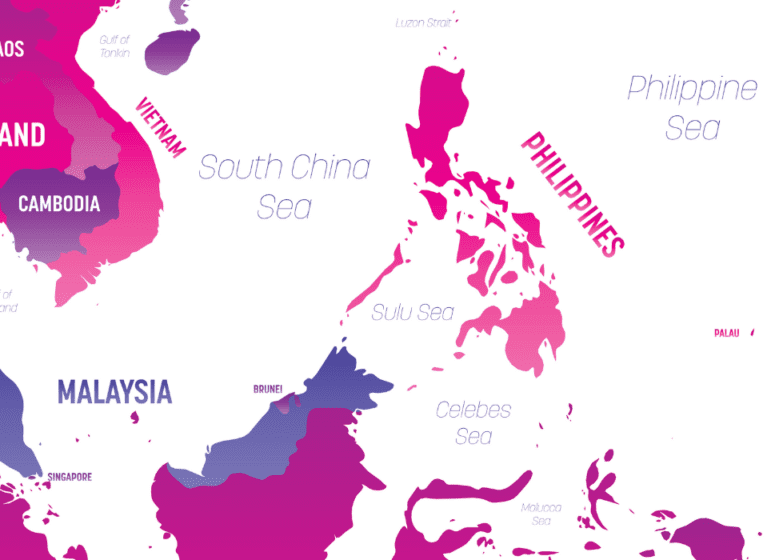The Southeast Asian healthcare market is emerging as one of great importance, expected to experience faster rates of healthcare spending growth over the next 5 years than the BRIC (Brazil, Russia, India, China) countries (Economist Intelligence Unit Report 2016). Expanding opportunities, combined with increasing free trade across the region and efforts to strengthen intellectual property rights, makes the SE Asian region one of critical importance to pharmaceutical and medtech companies.
ASEAN, the Association of Southeast Asian Nations, represent 9% of the world’s population (629 million people) and has a GDP of almost USD 2.6 trillion. The 10 nations of ASEAN are Brunei Darussalam, Cambodia, Indonesia, Lao PDR, Malaysia, Myanmar, The Philippines, Singapore, Thailand and Vietnam.
In 2015, the ASEAN Economic Community (AEC) was established. Importantly, from the perspective of IP owners, the AEC is opening up free trade and therefore freedom of movement of goods between the ASEAN members. This, combined with the expansion of the healthcare market in this region, is one of the key reasons why SE Asia should be on the patent filing lists of all pharmaceutical and medtech companies.
Drivers of the SE Asian healthcare market expansion
So what is behind this market expansion and growth opportunity in SE Asia?
A report in 2016 by The Economist Intelligence Unit (South-East Asia: The New Emerging Healthcare Market Challenge) identified 5 “mega-trends” driving the growth and expansion of the healthcare market in SE Asia, and concluded that the biggest opportunities for companies in this space lie in the 3 most populous countries in the region – Indonesia, The Philippines and Vietnam.
- Mega-trend 1: expanding healthcare cover
Whilst there are still a lot of ‘kinks’ to iron out, implementation of Universal Health Coverage is expected to ensure basic healthcare access for 80% of SE Asia’s population by 2020. - Mega-trend 2: an ageing and more affluent population
With an ageing population comes an increased prevalence of age-related conditions and the associated need for preventative and diagnostic health measures.The increase in size of the middle and affluent class is also a very strong driver for increasing healthcare needs by virtue of spending on elective healthcare services and consideration of health choices as part of lifestyle. And while the incidence of infectious diseases is lower in the affluent class, their lifestyle has seen an increase in diseases typically associated with lifestyle – obesity, diabetes, some forms of cancer and heart disease.
- Mega-trend 3: improving private healthcare infrastructure
Private companies are being incentivised to enter the healthcare market to bridge the gap between demand and access, particularly in cities where incomes and the demand for healthcare has increased faster than the supply. - Mega-trend 4: digital healthcare
SE Asia is no different to the rest of the world in that technology is helping to improve access to healthcare. From enhancing interactions between city-based physicians and those in rural or remote parts of the country, to healthcare apps that inform and educate both patients and physicians alike, the adoption of technology is a key driver. - Mega-trend 5: The SE Asian business environment
The AEC is implementing a number of agreements that improve free trade and local market access and going forward, is expected to simplify regulatory pathways for pharmaceuticals and medical devices.In addition, trade policies and agreements are expected to improve market access for foreign healthcare companies and enable fairer competition with local healthcare companies by, for example, counteracting existing policies for only local pharmaceutical manufacturers to be eligible for government supply contracts.
But are the IPRs worth the paper they are written on?
The enforcement of intellectual property rights – this is the (Asian) elephant in the room and arguably one of the key areas of development.
There is no question that more needs to be done in some SE Asian countries to improve enforcement regimes (see our article on SE Asia as a filing destination). In addition, an issue for pharmaceutical companies is compulsory license (CL) provisions. While most jurisdictions around the world have them, SE Asian governments have not been shy to exercise those rights, especially for antiviral medications. And in most instances, the CL policies dictate that the drugs in question must be supplied or manufactured locally.
Nevertheless, the enforceability of IPRs has not deterred the major pharmaceutical and medtech players from filing here in the meantime, and relying on patents as one element of a multifaceted protection strategy. And IPRs are on the AEC agenda, with the AEC Blueprint 2025 having an objective to “focus on elements that contribute to increasing the region’s competitiveness and productivity”, whereby strengthening IPRs is one of the key elements. Implementation of trade policies is also expected to result in a fairer system which sees a more competitive domestic market.
Bottom line for pharmaceutical and medtech companies
- The SE Asian healthcare market is growing – rapidly.
- Pharmaceutical and medtech companies would be wise to look forward and to start investing in the growth opportunities now, or risk missing out. Currently, between 4 and 12% of patent filings in SE Asia are in the pharmaceutical and medtech fields.
- Ensure your IP filing strategy provides adequate coverage which takes into account current and proposed free trade agreements and the related freedom of movement of goods.










